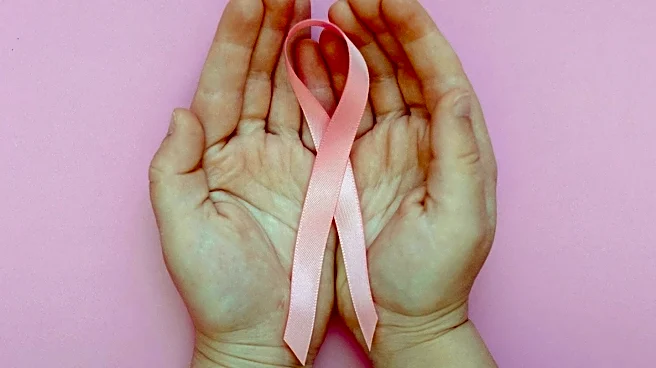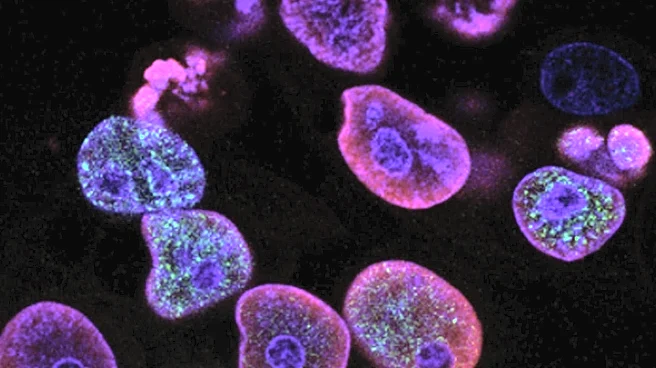What's Happening?
A recent study conducted by researchers at the University of Tokyo has uncovered a potential link between hair graying and a natural defense mechanism against cancer. Published in the journal Nature Cell
Biology, the research utilized lab mice to explore how melanocyte stem cells (McSCs) respond to DNA damage. These cells, responsible for producing pigment in hair and skin, can either differentiate and lead to hair graying or continue to divide, which may increase the risk of developing melanoma, a type of skin cancer. The study suggests that the process of seno-differentiation, where McSCs differentiate in response to DNA damage, could serve as a protective measure by eliminating potentially harmful cells.
Why It's Important?
This discovery is significant as it reframes the understanding of hair graying and its potential role in cancer prevention. By identifying seno-differentiation as a protective pathway, the research highlights a biological process that may help mitigate cancer risk. This could have implications for developing new strategies in cancer prevention and treatment, particularly in understanding how stem cells react to stress and damage. The findings also offer a new perspective on aging, suggesting that some age-related changes might have evolved as protective mechanisms against diseases like cancer.
What's Next?
Further research is needed to explore the implications of these findings in humans and to determine whether similar mechanisms are at play. Scientists may investigate how these processes can be harnessed or enhanced to develop new cancer prevention strategies. Additionally, understanding the environmental and genetic factors that influence McSC behavior could lead to targeted therapies that exploit this natural defense mechanism.
Beyond the Headlines
The study opens up discussions on the ethical and practical considerations of manipulating biological processes for disease prevention. It also raises questions about the broader implications of aging and how society perceives age-related changes. As research progresses, it may challenge existing narratives around aging and health, potentially leading to shifts in public health policies and personal health strategies.











